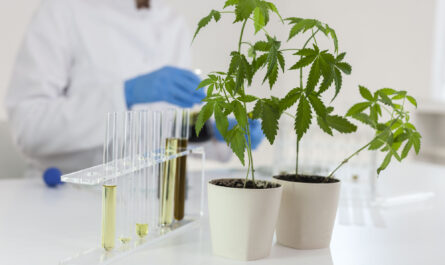These drugs work in a non-invasive way and provide fast onset of action compared to oral medications. Some common types of inhalable drugs include bronchodilators, steroids, antibiotics, and insulin.
Bronchodilators for Respiratory Conditions
Bronchodilators are the most widely used class of Inhalable Drugs for treating respiratory ailments like asthma and COPD. They work by relaxing and opening the airways of the lungs to facilitate easy breathing. Short-acting bronchodilators such as salbutamol provide fast symptom relief during asthma attacks. Long-acting bronchodilators including salmeterol and formoterol are used for daily maintenance therapy to prevent symptoms. These drugs are available in various delivery forms like metered dose inhalers, dry powder inhalers, and nebulizers depending on the severity of disease.
Steroids for Asthma and COPD Management
Corticosteroids are another important category of inhalable drugs prescribed for chronic respiratory diseases. These anti-inflammatory drugs are very effective in managing persistent asthma and reducing frequency of exacerbations in COPD. Beclomethasone, fluticasone, and budesonide are some commonly used inhaled corticosteroids. They have minimal systemic side effects compared to oral steroids due to their localized lung delivery. Combination inhalers containing corticosteroids along with long-acting bronchodilators are also available as maintenance therapy for patients with moderate-to-severe asthma.
Antibiotics for Lung Infections
Certain antibiotics can also be administered through inhalation route for fast localized treatment of lung infections. Examples include tobramycin used to control chronic Pseudomonas aeruginosa lung infection in cystic fibrosis patients. Amikacin sulfate inhalation solution helps manage nontuberculous mycobacterial lung infections. Antibiotic inhalers or nebulizers ensure high drug concentration reaches the site of infection in the lungs without affecting other body parts. This improves treatment effectiveness and reduces risk of adverse effects.
Insulin for Diabetes Management
Research is underway to develop innovative inhaled insulin products for diabetes management as an alternative to insulin injections. This could help overcome injection-related issues and improve patient compliance. Some insulin inhalation powders under development utilize lipid-based formulations and advanced pulmonary drug delivery technologies to enable efficient absorption of insulin into the lungs and blood circulation. Successful development of such products may revolutionize convenient diabetes care.
Market Growth Drivers
The global market for inhalable drugs has been witnessing tremendous growth in recent years driven by several factors:
1. Rising Prevalence of Asthma, COPD and Other Chronic Lung Diseases
Diseases like asthma and COPD have reached epidemic proportions worldwide due to increasing environmental pollution, smoking rates and lifestyle changes. This has exponentially increased the patient pool requiring long-term inhalation therapy. Growing disease burden is a major market growth driver.
2. Ageing Population Vulnerable to Respiratory Conditions
With life expectancy rising globally, the elderly population susceptible to chronic lung illnesses has been on the rise. Ageing is one of the highest risk factors for developing asthma, COPD and other respiratory disorders. This demographic shift will continue fueling growth in inhalable drug sales.
3. Advantages over Conventional Medications
The non-invasive nature of delivery, rapid onset of action, and minimal systemic absorption giving lesser side effects have made inhalable drugs highly popular among patients as well as clinicians. This advantage over oral pills and injections enhances patient adherence to therapy.
4. Technological Advancements
Ongoing innovations in pulmonary drug delivery systems such as smart inhalers, breath-actuated nebulizers, and portable electronic inhalers have addressed existing challenges while improving treatment effectiveness. Such revolutionary technologies are further reinforcing industry expansion.
5. Increasing Healthcare Investments in Emerging Markets
Countries like India, China, Brazil, South Africa and Mexico offer immense opportunities for growth of inhalation drug sales due to rising healthcare investments, growing middle-class populations and economic development. Emerging markets contribute significantly to global market growth.
The Future Looks Promising
Cumulatively, these dynamics driving the inhalable drugs market point towards a very promising future worldwide. Industry reports project sales to rise annually by 7-8% through 2030. Besides innovative bronchodilator and steroid inhalers, over next few years we may see introduction of first pipeline inhaled antibiotic and insulin products which will revolutionize care. Successful development of other biologic drugs and vaccines for inhalation is also expected. In the long run, possibilities of smart pulmonary drug-device combos networked with digital health technologies also look exciting. With medical research ongoing at a rapid pace, sky is the limit for this market touching more lives globally.
*Note:
1.Source: Coherent Market Insights, Public sources, Desk research
2.We have leveraged AI tools to mine information and compile it



